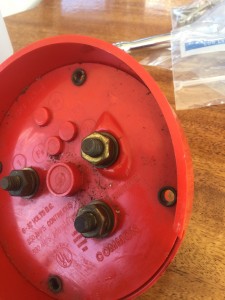The road so far……
It has been 24 years since my first trip on a sailboat of any type. My first was a group charter trip on a 1979 Solaris catamaran on a ten day trip to the Bahamas. That one experience has influenced the course of the remainder of my life as I am sure it does for many, many people. My wife and I have spent the last 15 years researching, touring, inspecting and sailing on as many sailboats and with as many people as we could find to expand our knowledge base and to eventually live on board our own sailboat.
We spent many years hitting the Annapolis Sailboat Show. We quickly realized that our boat was probably on display there, but long before we started to attend those shows. Initially, we had hoped to buy a 5 to 10 year old catamaran in the 42 to 44 foot range, which would have cost us in excess $250k. We wanted to live aboard and sail sooner, rather than later, so we decided to keep our initial investment under $150,000. In an effort to find an affordable, well maintained vessel we drove the East coast of the U.S. around the tip of Florida and then North up the Gulf Coast on more than one occasion touring every boat we thought was remotely suitable.
We decided that a blog in conjunction with a sailboat cruising and selection consulting service would be the best way to incorporate our love of boats and sailing into our everyday life.
We hope to assist others interested in the cruising lifestyle in these areas:
A small selection of marine services…hull cleaning, painting, light maintenance, wiring and sometimes just providing an extra set of moderately skilled hands at a very affordable price.
A journal of our experiences, failures, successes and issues during our search and transition to life afloat
A candid discussion of the boats you are currently considering; design, construction quality, seaworthiness, safety, speed and comfort along with resources for research
Answers regarding suitability of various designs
Analysis of your total overall cost of ownership: purchase, refit, outfitting, maintenance and resale value
Additional boats for you to review based on your cruising plans, itemized lists of criteria for your new floating home based on your desires
Evaluation and forwarding of listing and selling prices of comparable vessels utilizing information from various sources and personal experiences
Referral to a qualified local marine surveyor
An in depth review of your individual survey with detailed recommendations for post-survey price negotiations
Evaluation of equipment needed for offshore passage making
Advice for choosing USCG documentation or state registration, offshore flagging and/or tax implications
Recommendations for insurance coverage
Gear tests and real world performance
Thanks for visiting and if we can be of assistance please contact us for advice!!
Capt. Brett and Admiral Kim…..
Auto Amazon Links: No products found.



